Best evergreen trees: 17 ways to add color and structure to your plot
Our favorite evergreen trees are guaranteed to deliver on shape, form and color all year round
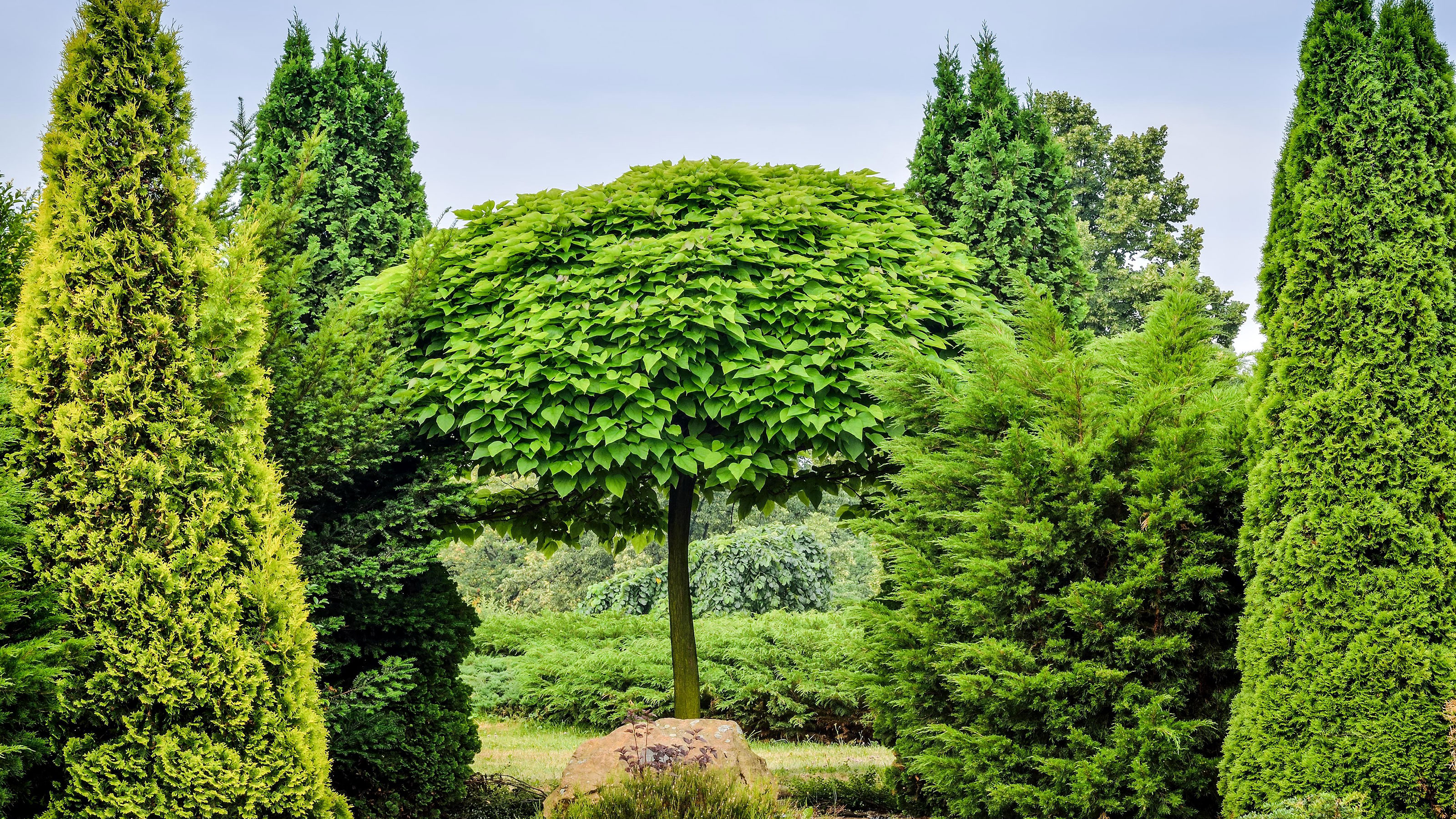
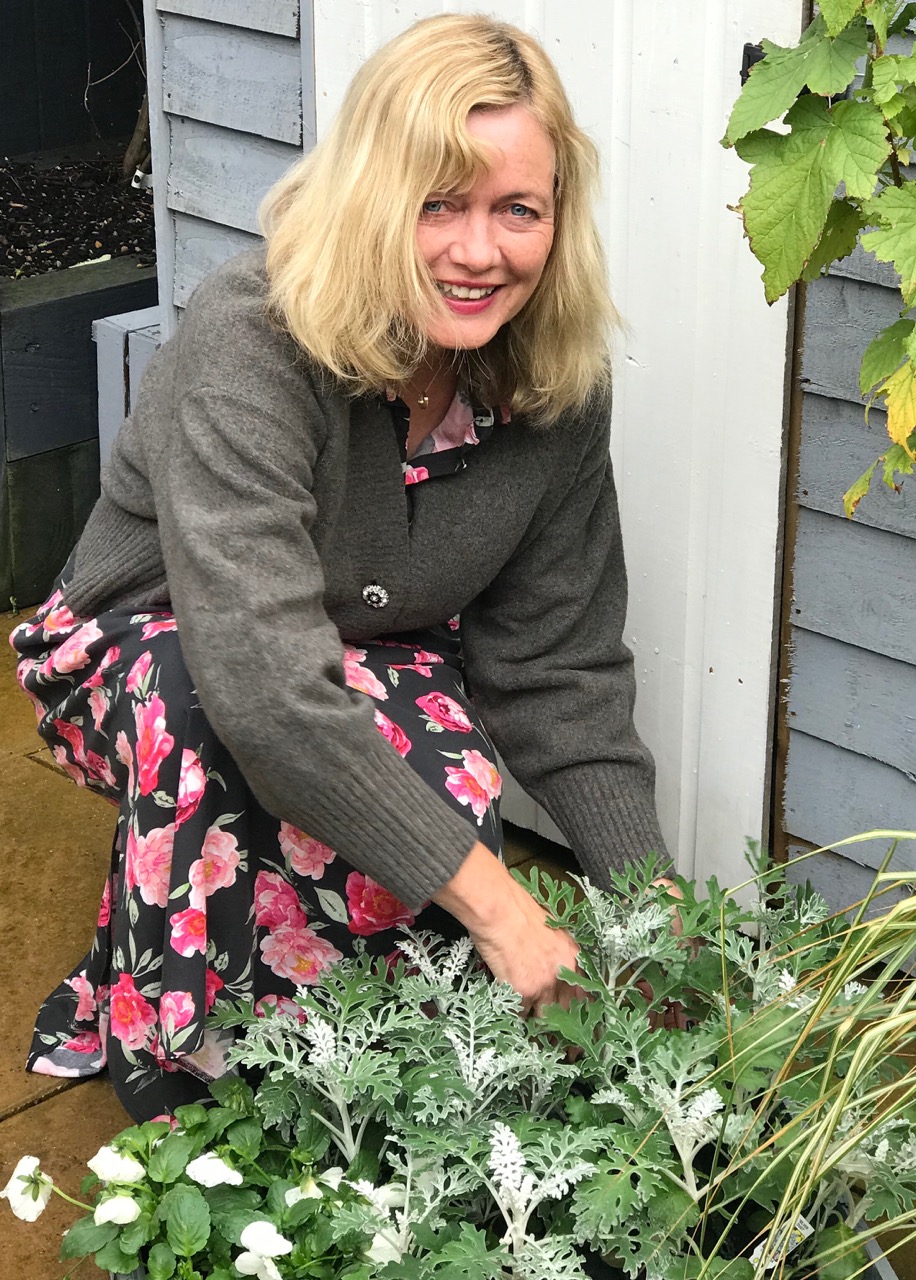
Many plants lose their leaves in fall and winter, but evergreen trees continue to add interest, color and texture to the garden. Despite the generic name, they are rarely just green. Some may even change color with the seasons, presenting shades of misty blue, rich gold, glowing red and moody grey, with leaves varying in shape from finely tapered conifer needles to lush, exotically swaying palm fronds.
Certain evergreen trees have flowers, some bear fruit, others have attractively shaped cones, decorative seeds, nuts and dramatically colored or textured bark. Evergreen conifers may also have a delicious, aromatic fragrance which will waft across the garden.
If you're also searching for the best trees for small gardens, you'll be able to find an evergreen tree to suit your space as they come in a huge array of sizes. There are dwarf varieties which may only top three feet (1m), but you'll also find vast, lofty trees whose ultimate height is 300ft (100m). There are also evergreen trees to suit harsh winters, exposed conditions and dry climates, often adding a feature to the most barren of landscapes.
The most difficult thing about evergreen trees is probably making the initial selection for your garden from a long list. If in doubt, ask for advice from a local garden center or nursery who will be familiar with the growing conditions for your region.
Enjoy year round color with these 17 evergreen trees
According to the RHS, evergreen trees have many advantages. 'They are great for creating privacy and shelter, and cope in a variety of soil types and situations. They are particularly valuable in winter, providing a green highlight when most other plants have died back or are reduced to bare stems.'
So whether you want to squeeze a single evergreen in a pot by the back door, or prefer to plant a big tree in a forever garden, our selection has all the options covered.
1. Bay tree (Laurus nobilis)
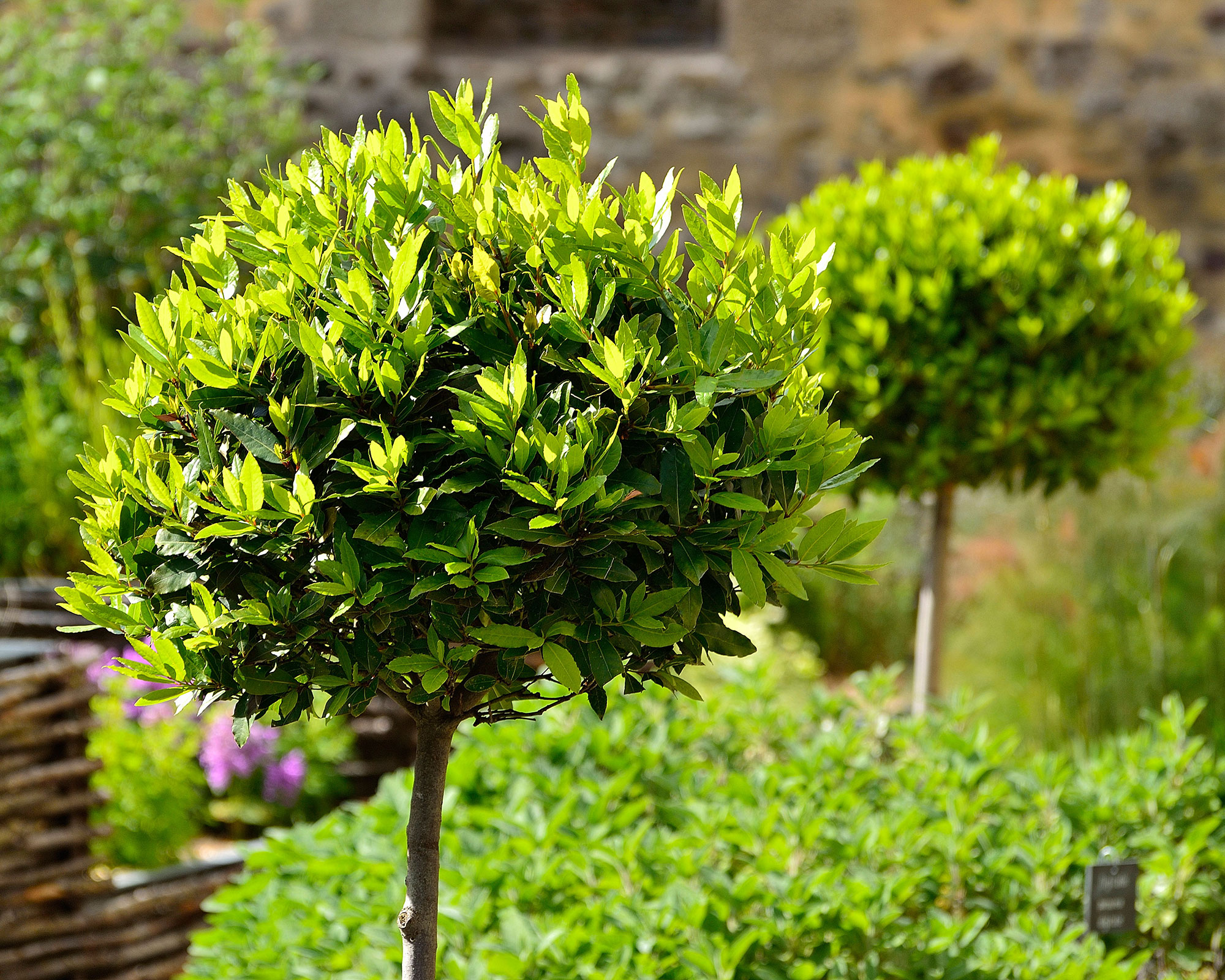
- Best for: growing in a pot
- Hardiness: USDA 8-10 (UK H8)
- Height: 10ft (3m)
- Spread: 3ft (1m)
Perfect for beginner gardeners, this is an elegant, low maintenance tree which thrives either in a pot with well-drained soil-based compost or it can be planted in the ground. The glossy leaves are aromatic and edible.
Choose a sheltered spot in a sunny site. For container grown trees, add control release fertilizer pellets or some liquid feed fortnightly in mid-spring to late summer and repot every two to three years.
Lollipop-shaped bay trees bring a touch of formality to the garden. They can be easily shaped and kept tidy by pruning with a pair of the best secateurs in the summer.
2. Holm oak (Quercus ilex)
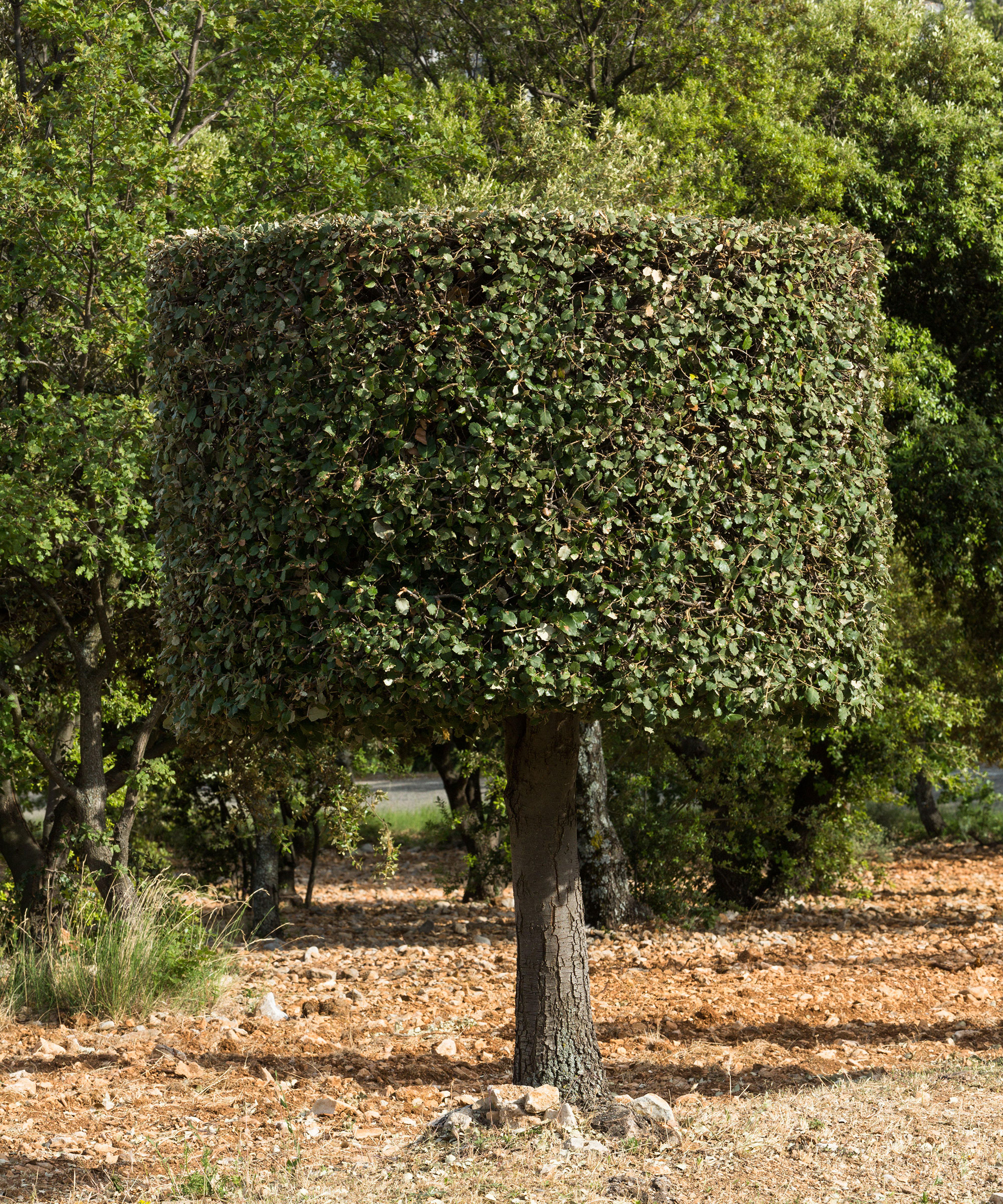
- Best for: classic English elegance
- Hardiness: USDA 7-10 (UK H7)
- Height: 32ft (10m)
- Spread: 19ft (6m)
A shapely tree with a naturally rounded crown and dark, glossy green leaves whose soft spikes resemble holly leaves (this is why it’s sometimes called the Holly Oak). Added interest comes with green acorns which eventually turn dark red.
This evergreen tree does need regular shaping to keep it a manageable size and it can be trimmed into neat, compact forms for use in small gardens.
It’s a tough tree which will tolerate exposed sites and is resistant to salt spray, making it a good choice for a coastal plot. Grow in full sun or dappled shade.
3. Lawson Cypress (Chamaecyparis lawsoniana)
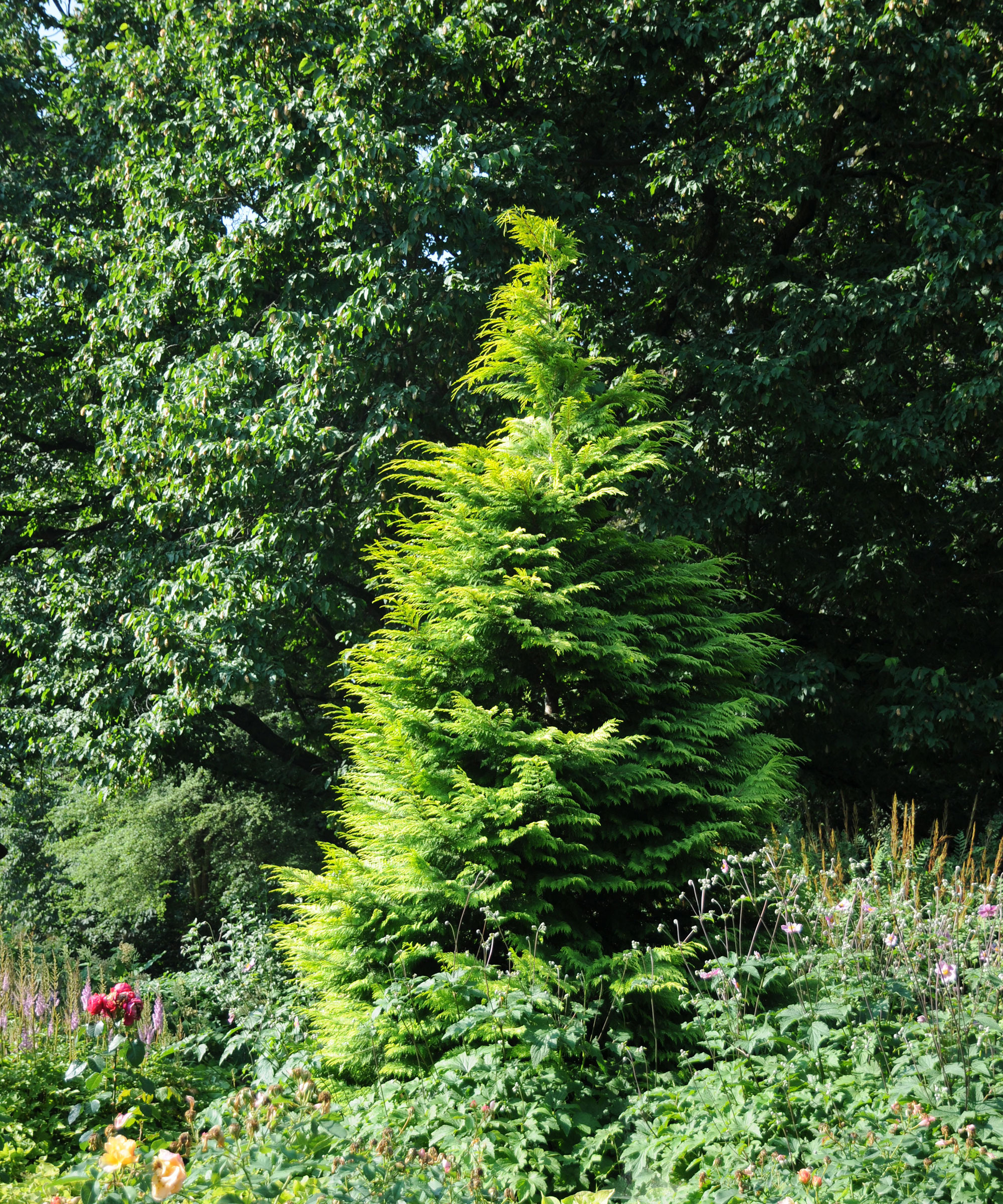
- Best for: a striking accent tree for any size space
- Hardiness: USDA 6 (UK H4)
- Height and spread: varies according to the cultivar
Looking for a reliable, well-shaped conifer that won’t get out of hand and annoy the neighbors? This North American native species is suitable for many different soil types. Many varieties will thrive in an exposed or sheltered position.
There are so many different types and colors to choose from. ‘Columnaris’ with its blue-grey foliage is one of the most popular. ‘Golden Wonder’ is rich yellow and ‘Green Pillar’ is a lovely medium sized tree. If space is very limited, dwarf varieties, such as ‘Aurea Densa’ are a sensible pick.
4. Eucalyptus gunnii (Cider Gum)
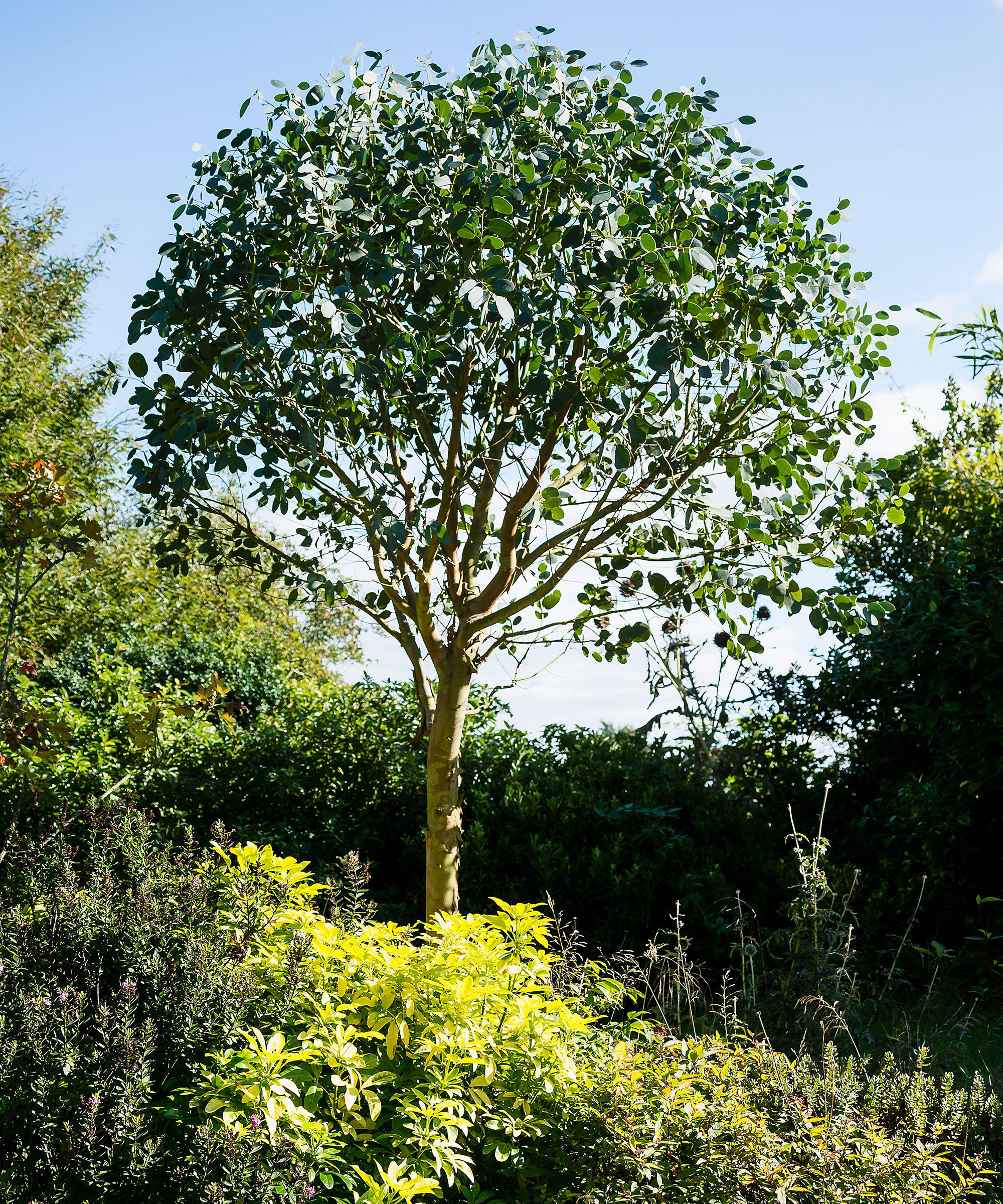
- Best for: easy fence coverage
- Hardiness: USDA 7-10 (UK H8)
- Height: 80ft (25m)
- Spread: 50ft (15m)
A tall, skinny evergreen tree with spicy aromatic foliage which is blue-green in younger plants, then matures to a deeper shade. The bark has a tactile, flaky texture for added visual interest. Native to southern Australia, this is one of the fastest growing and hardiest of the eucalyptus varieties, and it also thrives in the UK and the US.
Cut back regularly to keep on top of the size and this will also ensure plenty of attractive new growth with smaller, button-shaped leaves. In the height of summer, it may produce a flush of pretty white flowers. Plant in full sun or part shade.
5. Olive
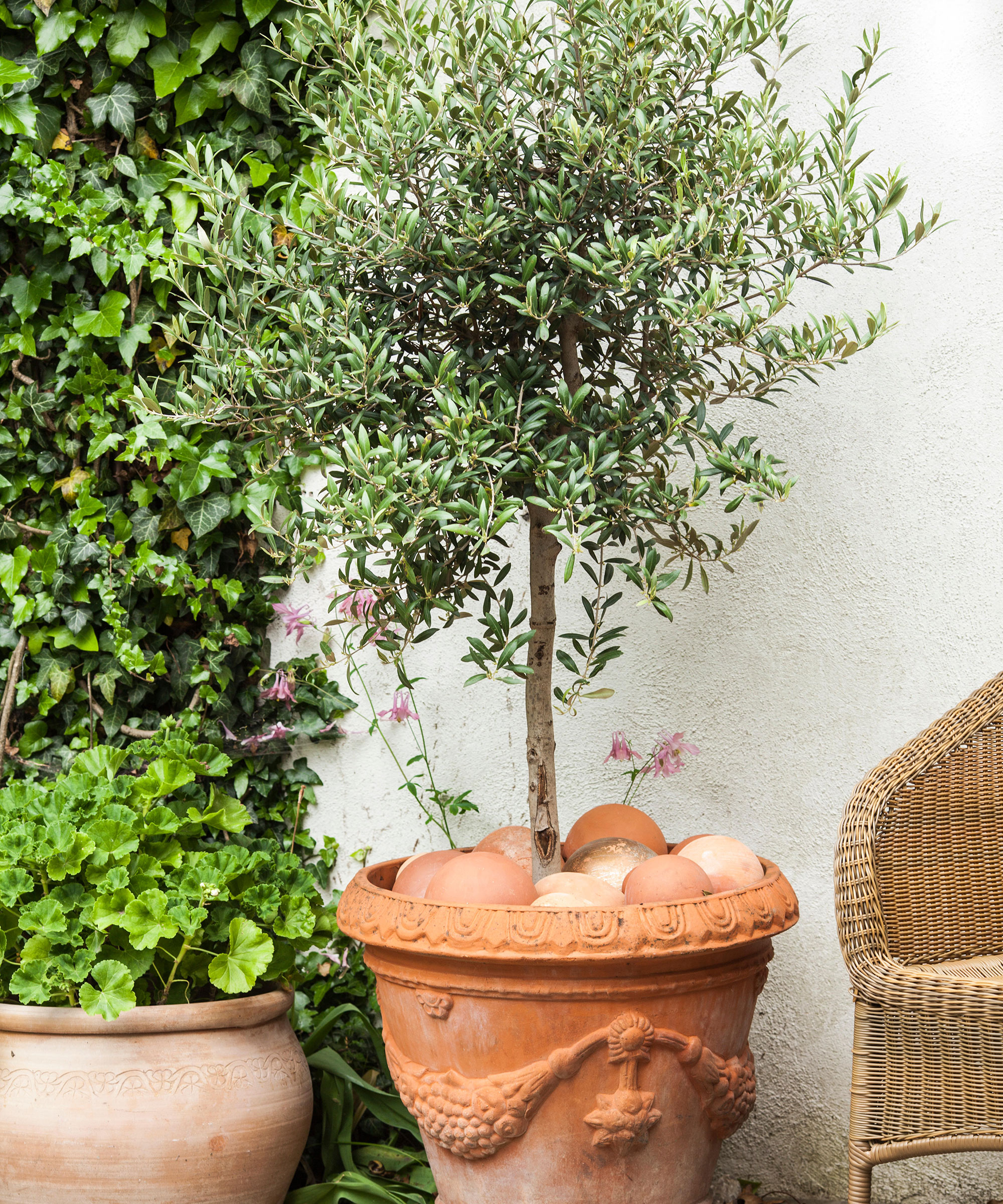
- Best for: timeless Mediterranean style
- Hardiness: USDA 9-11 (UK H10/11)
- Height: 25-30ft (7-9m); less if pot grown
- Spread: 25-30ft (7-9m); less if pot grown
Olive trees hail from the Mediterranean so they need warmer climes to thrive. Slow growing, their shimmery silver foliage adds a stylishly subtle backdrop to a muted palette of purple and white flowers.
They are one of the best trees to grow in pots, but you will need to water them weekly in hot dry spells and give them a fortnightly feed in spring with a granular fertilizer.
If temperatures drop to below 10.4˚F (-12˚C) for long periods in your region or state, the olive tree will need to be over-wintered inside, but as it's one of the best indoor trees it will make a striking addition to your interior during the cooler months.
In sheltered sites, when it’s likely to drop below 14˚F (-10˚C), a temporary horticultural fleece coat should be enough to prevent permanent damage.
6. Oleaster (Eleagnus angustifolia)
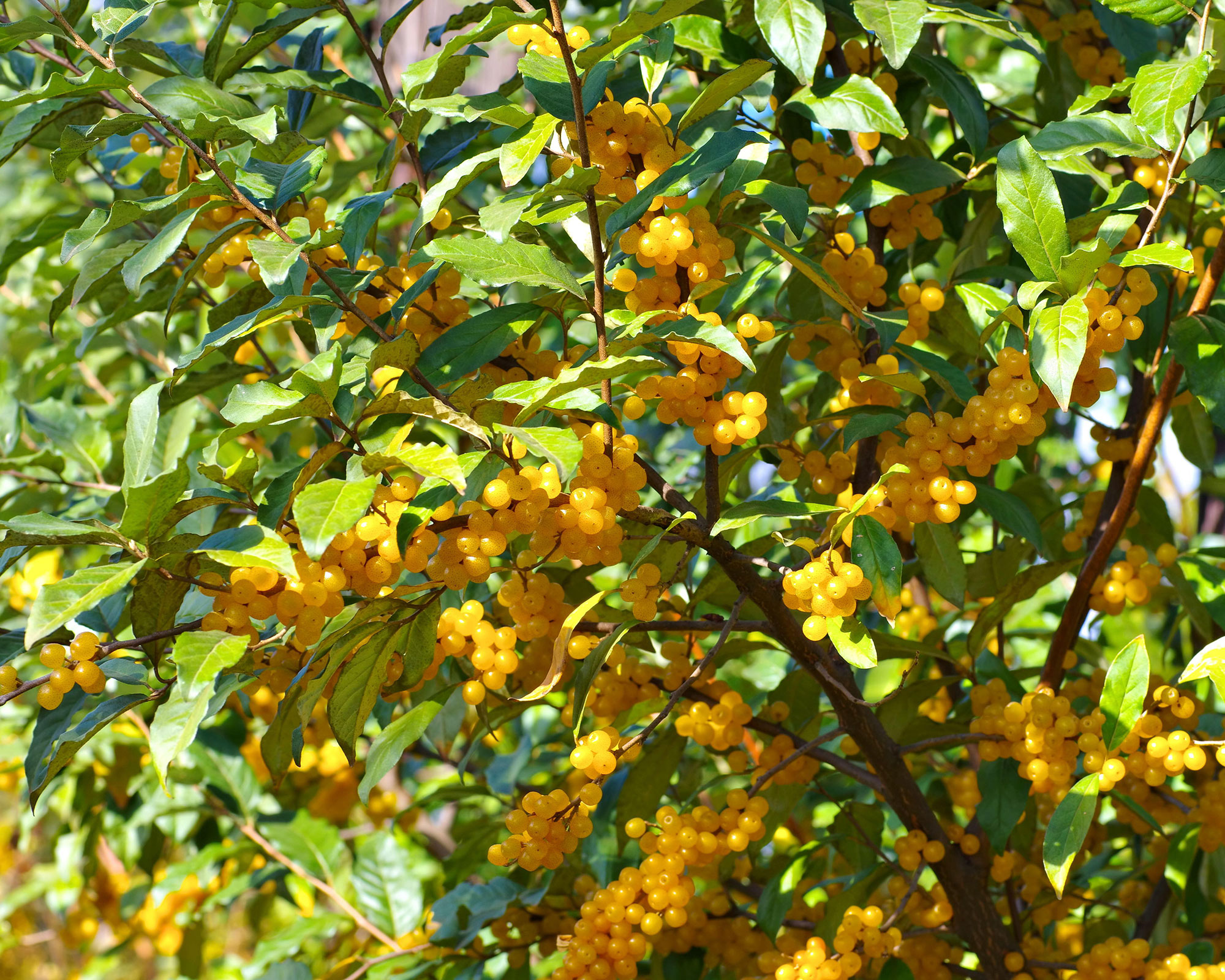
- Best for: a hardier olive tree lookalike
- Hardiness: USDA 7b (UK H2)
- Height: 23ft (7m)
- Spread: 23ft (7m)
If you love the look of olive trees, but your growing conditions are too cold or damp, this robust shrub or tree could make an excellent substitute.
The foliage of the so-called Russian Olive has a lovely silvery sheen, it flowers from September to October and develops little orange speckled fruits in February. This plant tolerates full sun, part shade and can cope with moist soil, as well as coastal conditions and exposure to wind.
It is a good choice for a small garden, as it won’t grow taller than 4m. However, in some areas of the US, these evergreen trees are designated an invasive species, so do check regulations before planting.
7. Eucryphia nymansensis
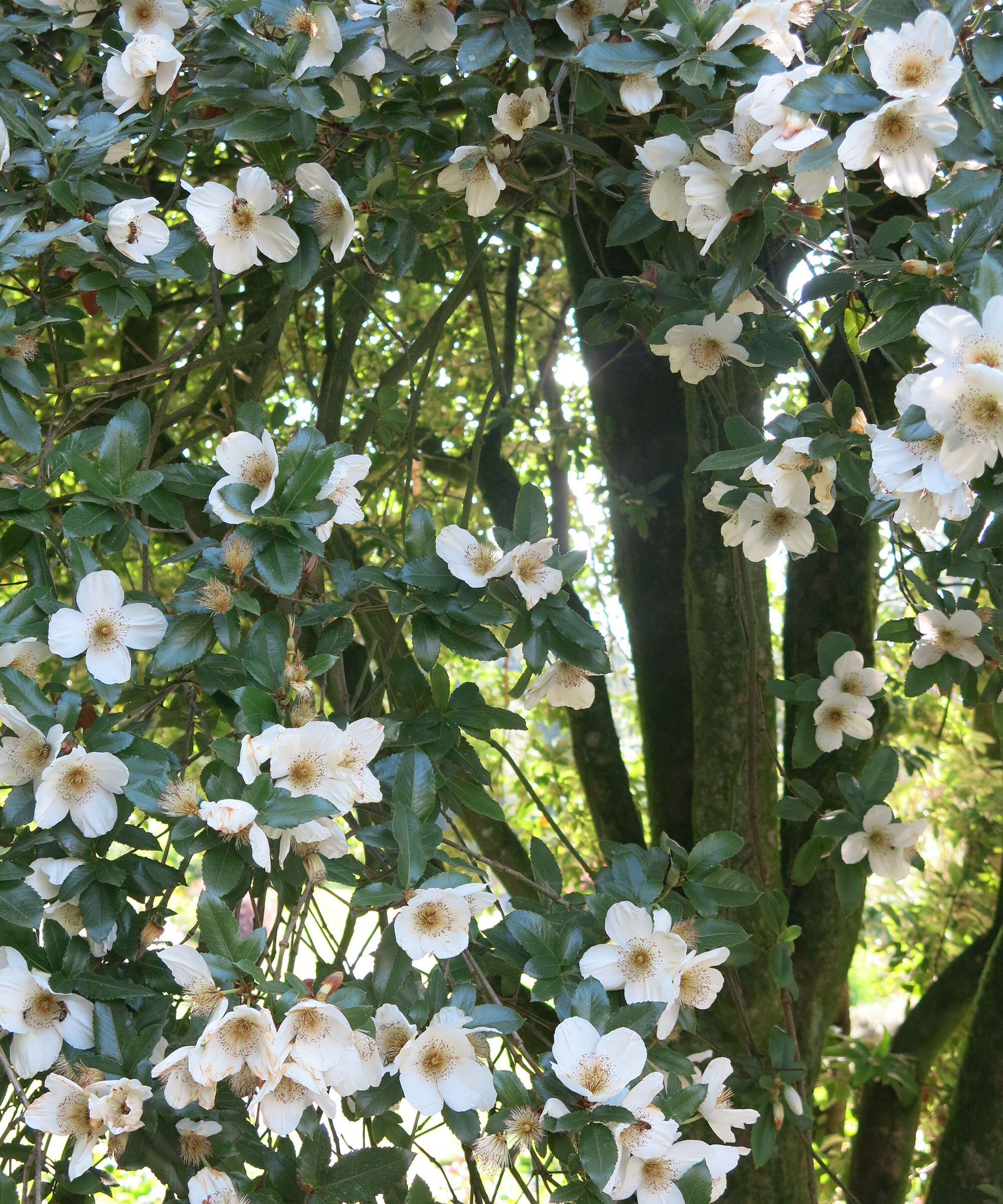
- Best for: adding curb appeal in a front garden
- Hardiness: USDA 8-9 (UK H7)
- Height: 20-50ft (6-15m)
- Spread: 6-12ft (180cm-3.6m)
If you're looking for one of the best trees for front yards, this variety is worth considering. Also known as the ‘brush bush,’ this tree has the double bonus of dark, glossy evergreen foliage and stunning large, honey scented cup-shaped white flowers from late summer to autumn.
It prefers partial shade or full sun and a sheltered spot, so a woodland garden where it is protected by other trees would be a good bet. It will look after itself once it’s established, and only really requires a light trim in late winter.
8. Strawberry Tree (Arbutus unedo)
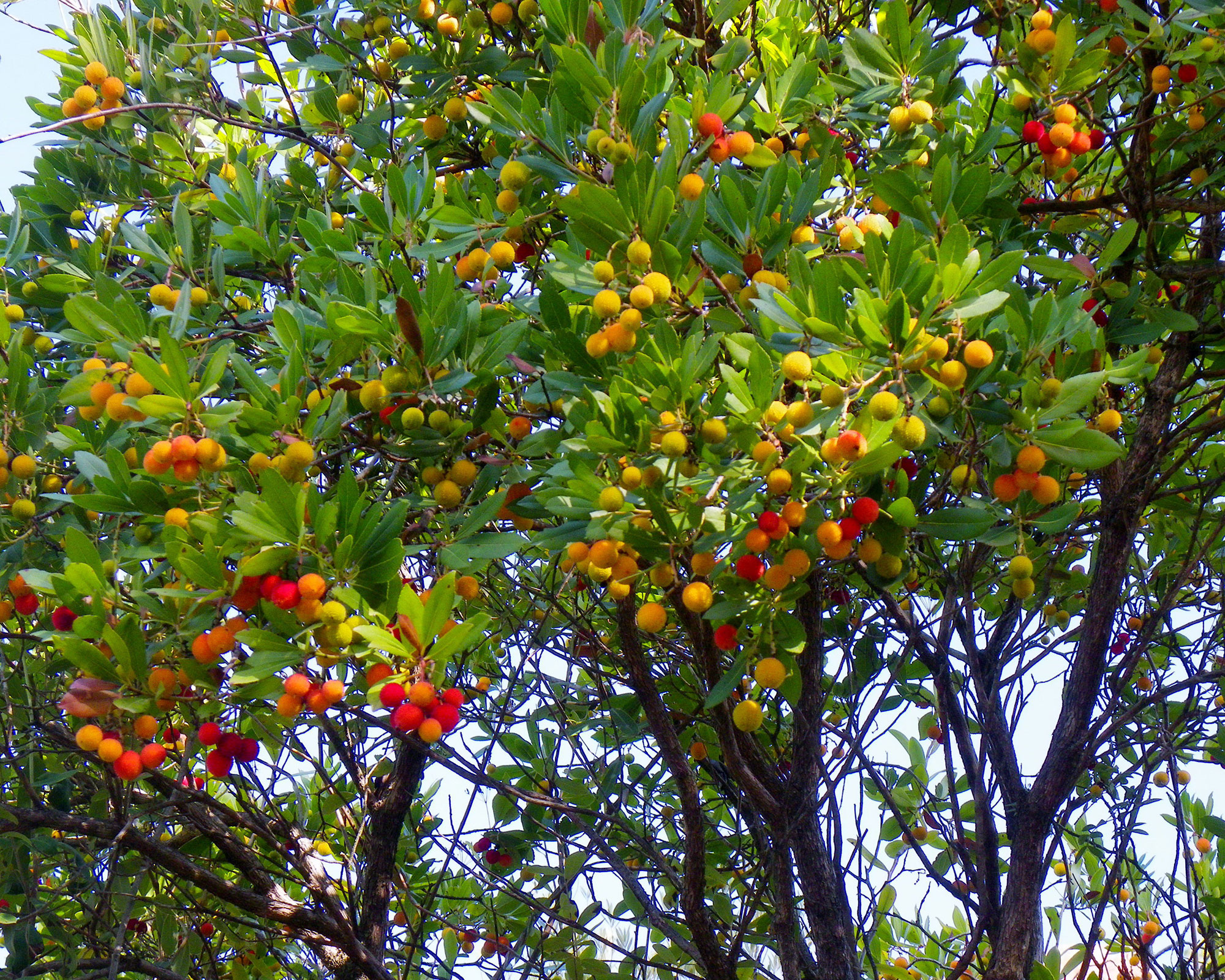
- Best for: 12-month interest with flowers, fruit and foliage
- Hardiness: zones 8b-11 (UK H7)
- Height: 25ft (8m)
- Spread: 25ft (8m)
Garden designers love this evergreen tree for its large, leathery leaves, clusters of fabulous white flowers in late summer and autumn, and the almost cartoon-like red textured fruits which give it the common name of the Strawberry Tree.
If you're in need of one of the best trees for privacy, you can plant it to screen an ugly view or better still, make it a feature tree as it has so much to create seasonal interest. Plant in well-drained soil.
9. Colorado Blue Spruce
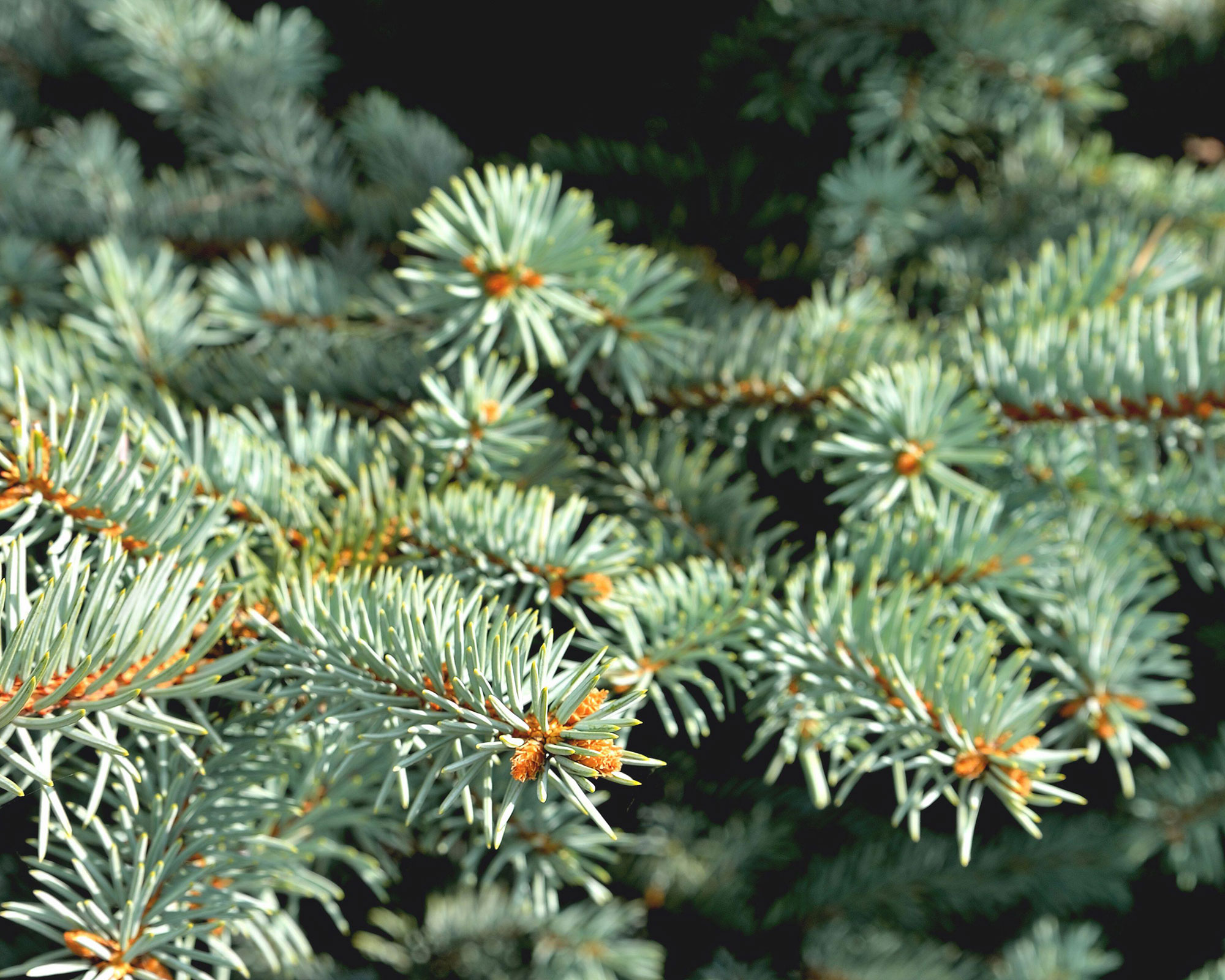
- Best for: soft, subtle colors
- Hardiness: USDA 3-7 (UK H3)
- Height: Varies according to type
- Spread: Varies according to type
Picea pungens has beautiful soft blue silvery foliage, spiky leaves and light brown winter buds. It’s native to Colorado, New Mexico, Utah, Wyoming and Idaho, so these evergreen trees can cope with cold climates and high altitudes.
Try ‘Fat Albert’ which has a symmetrical pyramid shape, growing as big as 10ft (3m). ‘Koster’ is a good medium sized tree. For a tiny space, choose a dwarf variety such as ‘Montgomery,’ which tops just 2-3 (60-90cm) feet tall. Grow in full sun.
10. Portugese Laurel
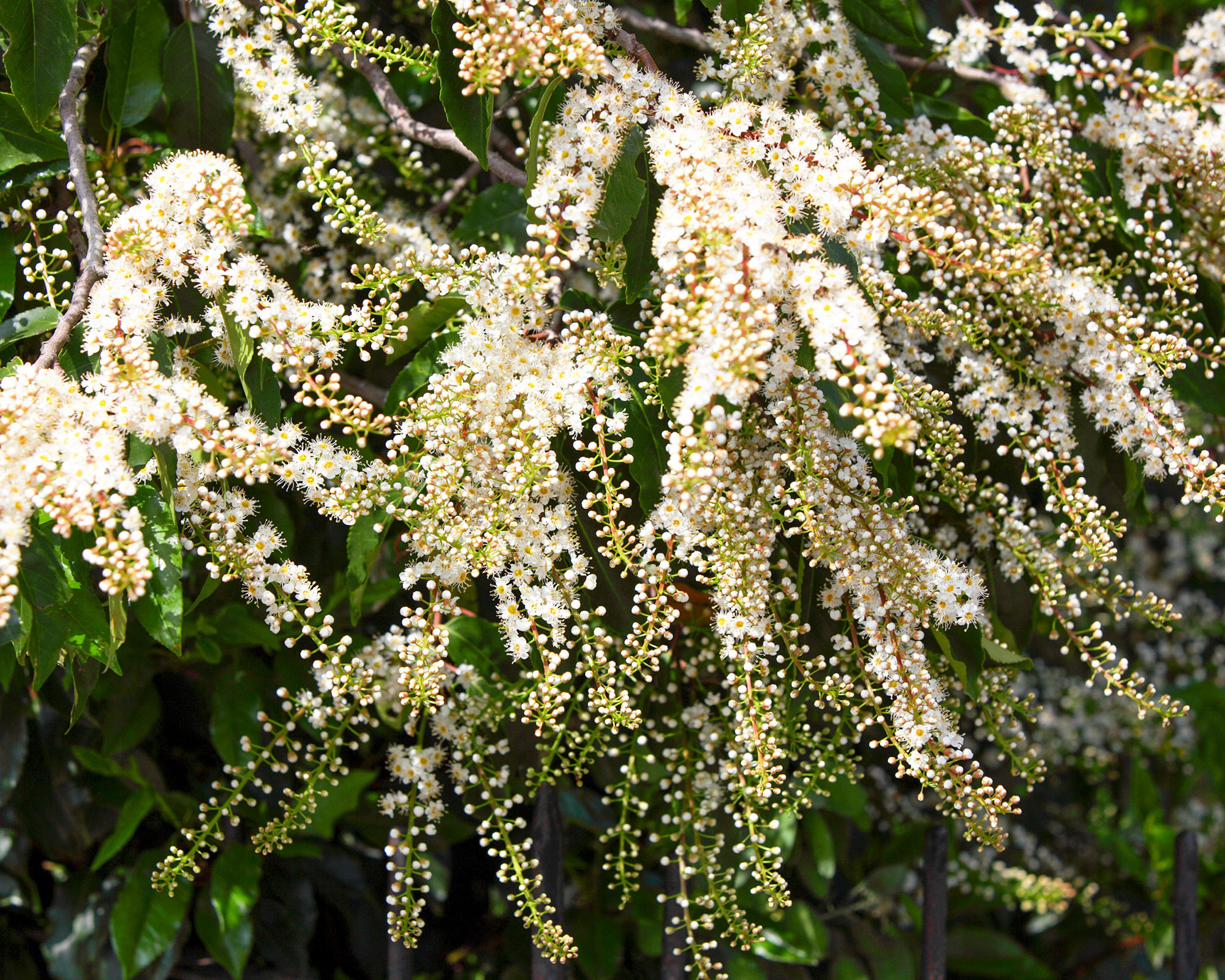
- Best for: areas of shade
- Hardiness: USDA 6b-9 (UK H7)
- Height: 30ft (10m)
- Spread: 30ft (10m)
As a general rule, flowering trees need at least a few hours of sun a day to thrive, but the Portugese Laurel (prunus lusitanica) is one of the best trees for shade and will happily grow in a shady corner. It has neat, glossy evergreen leaves and delicate small, creamy white flowers from April to May.
It is deer resistant and it only requires a light trim once a year to keep it in shape. A brilliant choice for busy people because it needs such minimal care.
11. Irish Yew (Taxus baccata fastigiata)
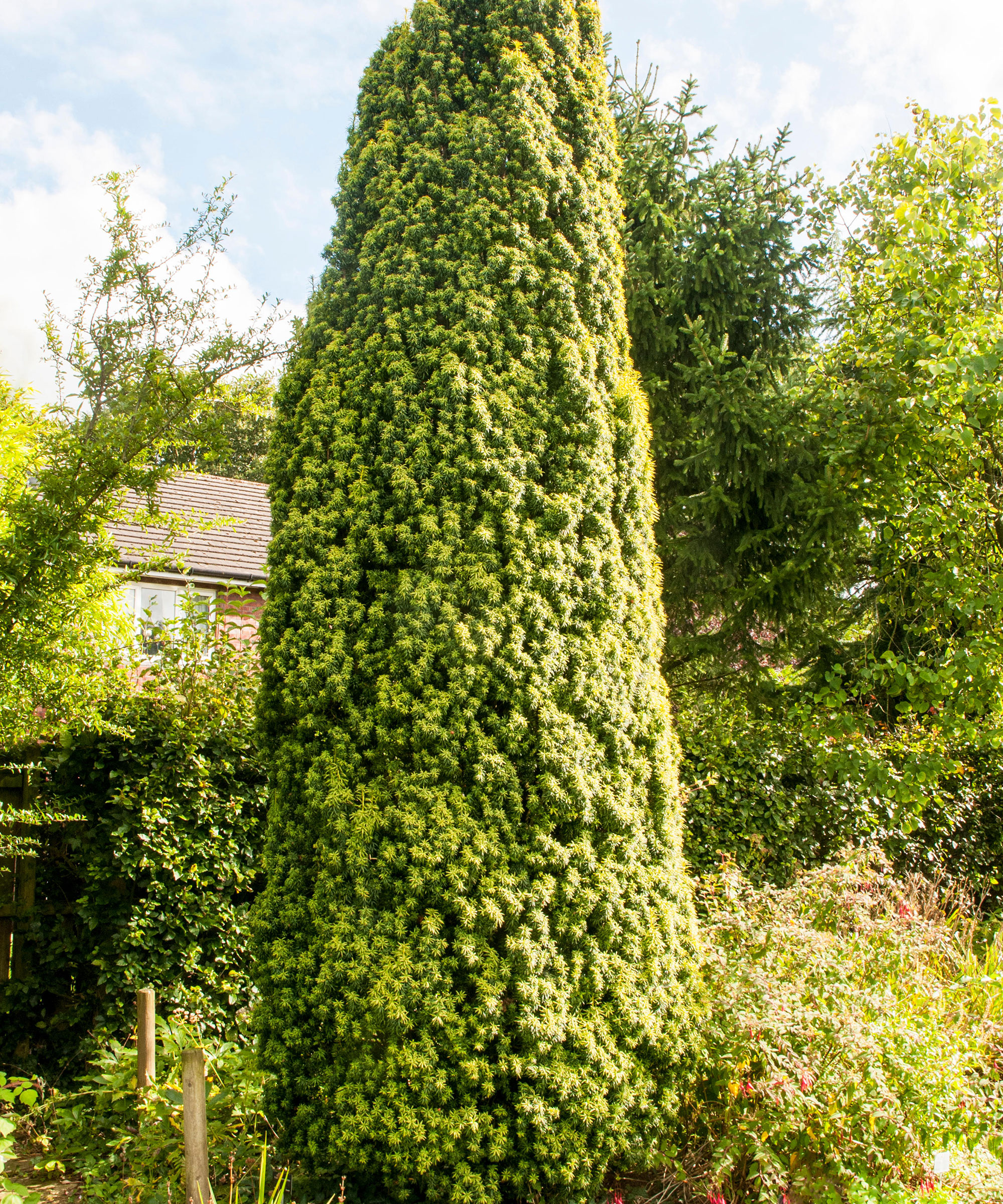
- Best for: a slimmer, space-saving tree
- Hardiness: USDA 5/6 (UK H4)
- Height: 30ft (10m)
- Spread: 12ft (4m)
Perfect if you want to create a focal point, or visual ‘exclamation mark’ in a shady border, this dense, upright tree has an elegant column shape and dark green needle-like leaves. It is reasonably compact, making it suitable for small to medium sized gardens.
The female plants have red berries in the autumn. All parts of the tree are toxic, so avoid this one if you have young children or pets. The golden version, Taxus baccata fastigiata ‘Aurea’, would brighten up a gloomy garden corner.
12. Variegated holly (ilex aquifolium)
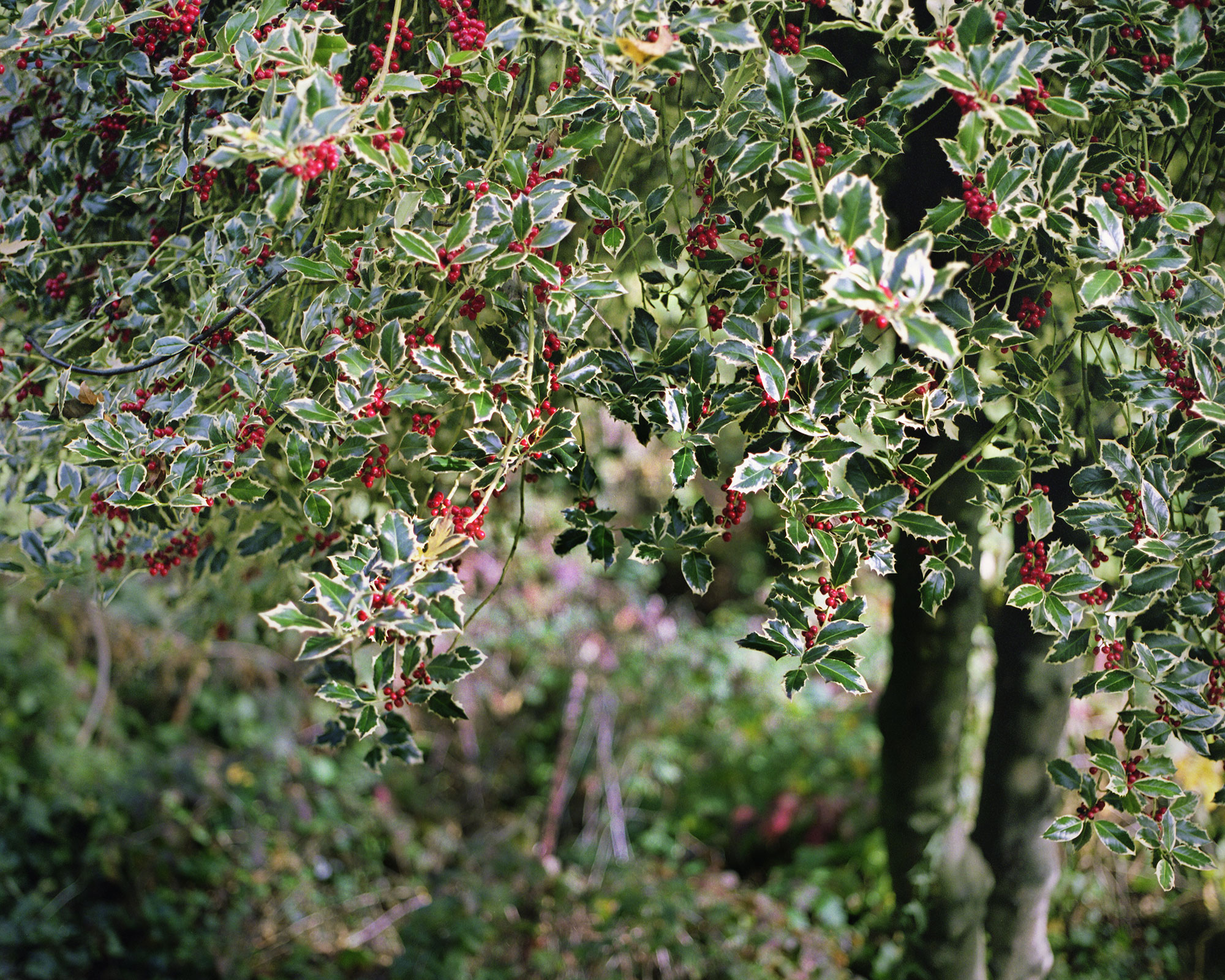
- Best for: brightening up shady spots
- Hardiness: USDA 6b-7 (UK H6)
- Height: 70ft (20m)
- Spread: 20ft (6m)
A slow-growing evergreen holly with marbled leaves which brings lots of interest to a shaded site. To ensure plenty of decorative winter berries, plant one male tree and one female (although some plant companies sell pairs in the same pot).
Holly ‘Golden King’ has spineless green leaves with a gold rim, and ilex aquifolium ‘Argentea Marginata’ has spiny foliage with silvery cream edges but there are lots of different ones to choose from.
Hollies do well in partial shade, preferably with moist, well-drained soil. Deeper shade is fine, but it may cause the leaf coloration to be less defined.
13. Magnolia Grandiflora (Bull Bay magnolia)
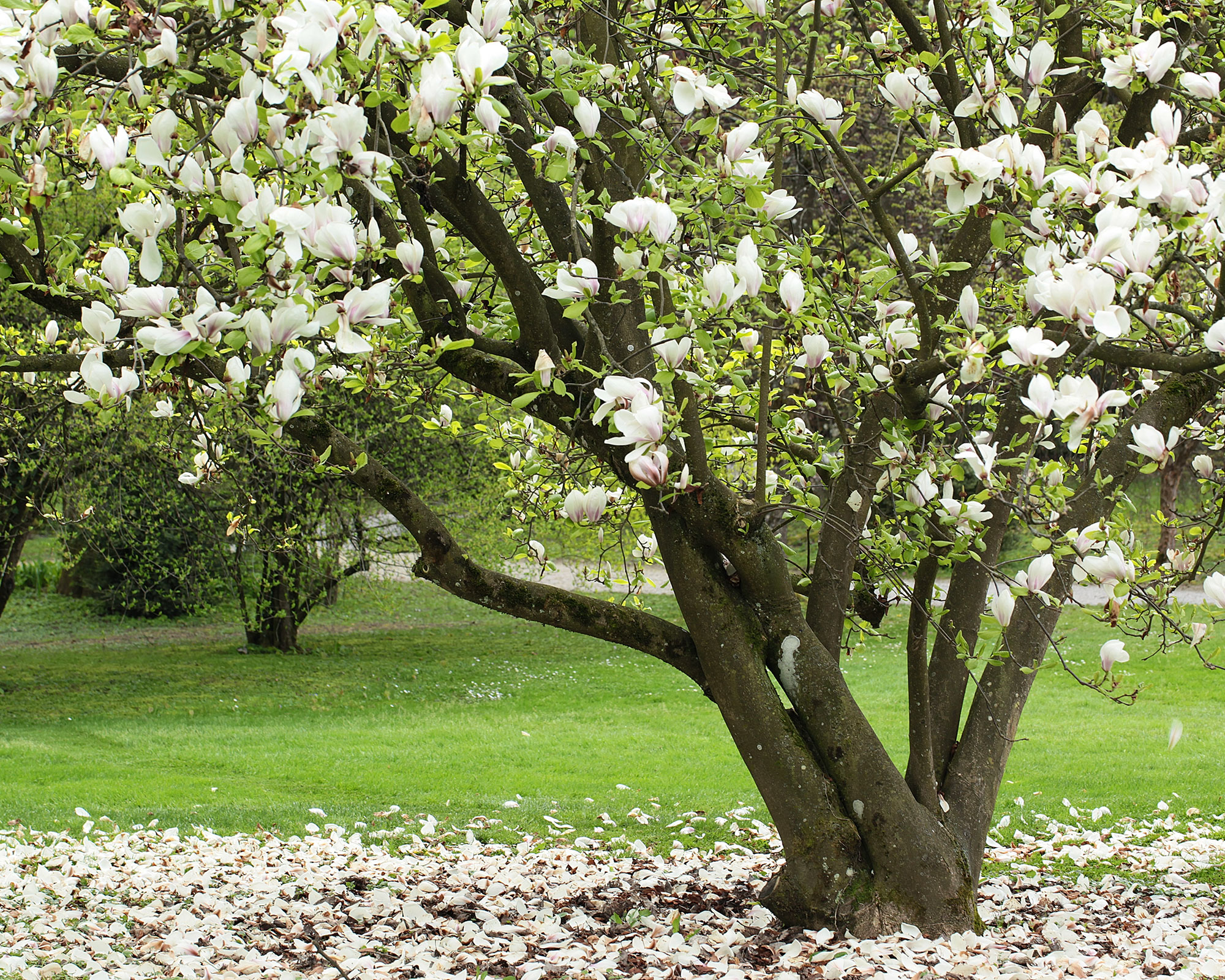
- Best for: fragrant flowers
- Hardiness: USDA 6-9 (UK H6)
- Height: 18m (60ft)
- Spread: 15m (50ft)
One of the best flowering trees, this evergreen tree has the wow factor, coming up time and again on garden designers’ favorites lists. It’s the killer combination of the dense dark green leaves and glorious large creamy cup shaped fragrant flowers in late summer to early autumn which makes it such a beauty.
Despite its exotic looks, it is not difficult to grow, but it does require a large plot, well-drained soil and a sunny spot, or at least some dappled shade. Large specimen trees are slow growing but can reach 60ft (18m) tall. However, if space is an issue, smaller standard versions on long skinny trunks are available from specialist nurseries.
14. Italian Cypress (Cupressus sempervirens)
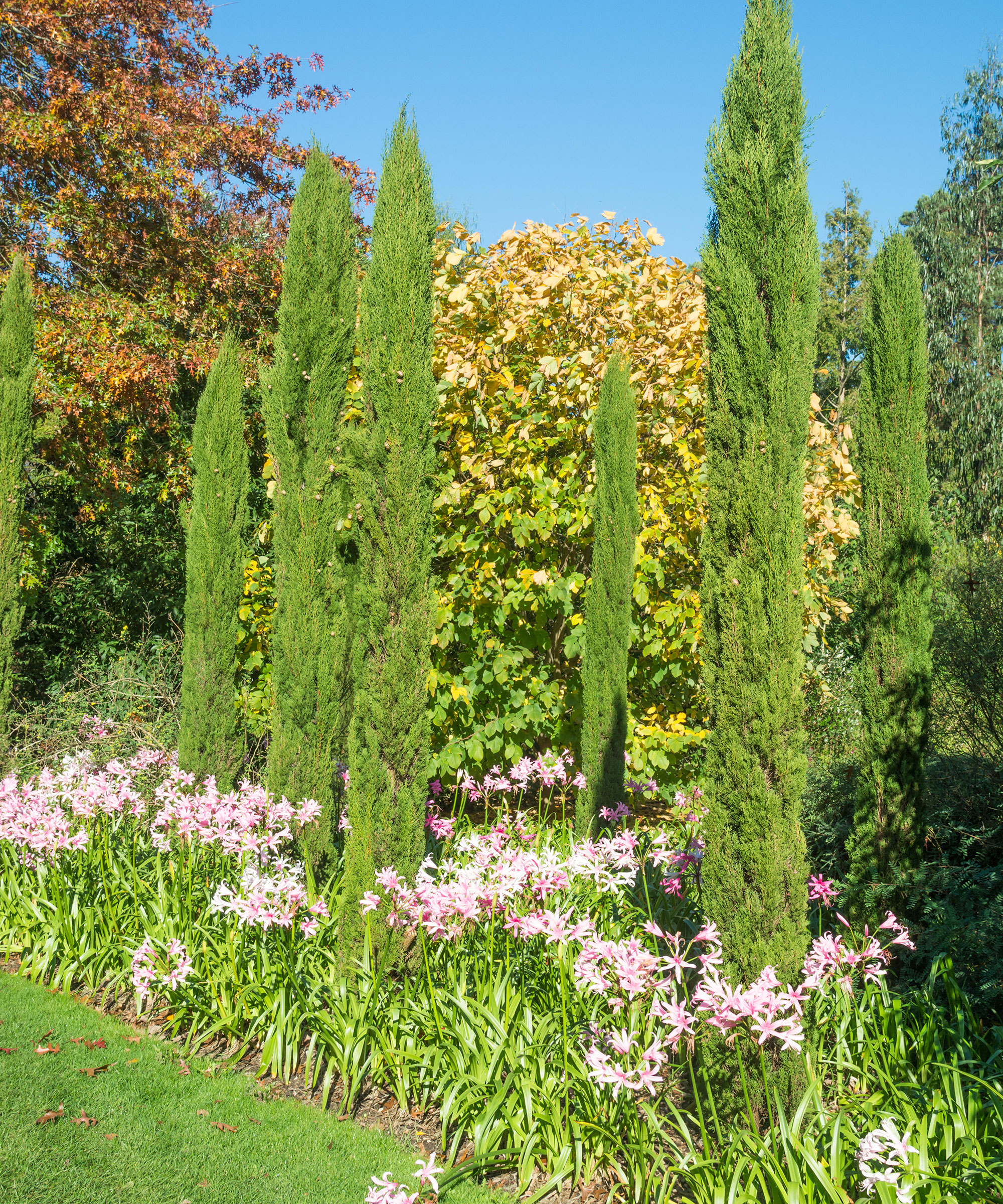
- Best for: chic, architectural style
- Hardiness: USDA 8-10 (UK H7)
- Height: 33ft (10m)
- Spread: 5ft (1.5m)
These pencil slim trees are ideal for stylish Mediterranean gardens. Use their striking architectural shape to frame either side of a gate, or to draw attention to a pretty view. They can be grown in the ground or in pots, but they will need full sun and a warm climate to thrive.
Once they are established (after about two years), these evergreen trees will be drought tolerant. To maintain the appealing slender shape, trim lightly twice a year and remove the cones as these can push the branches apart and spoil the silhouette.
15. Pinus pinea
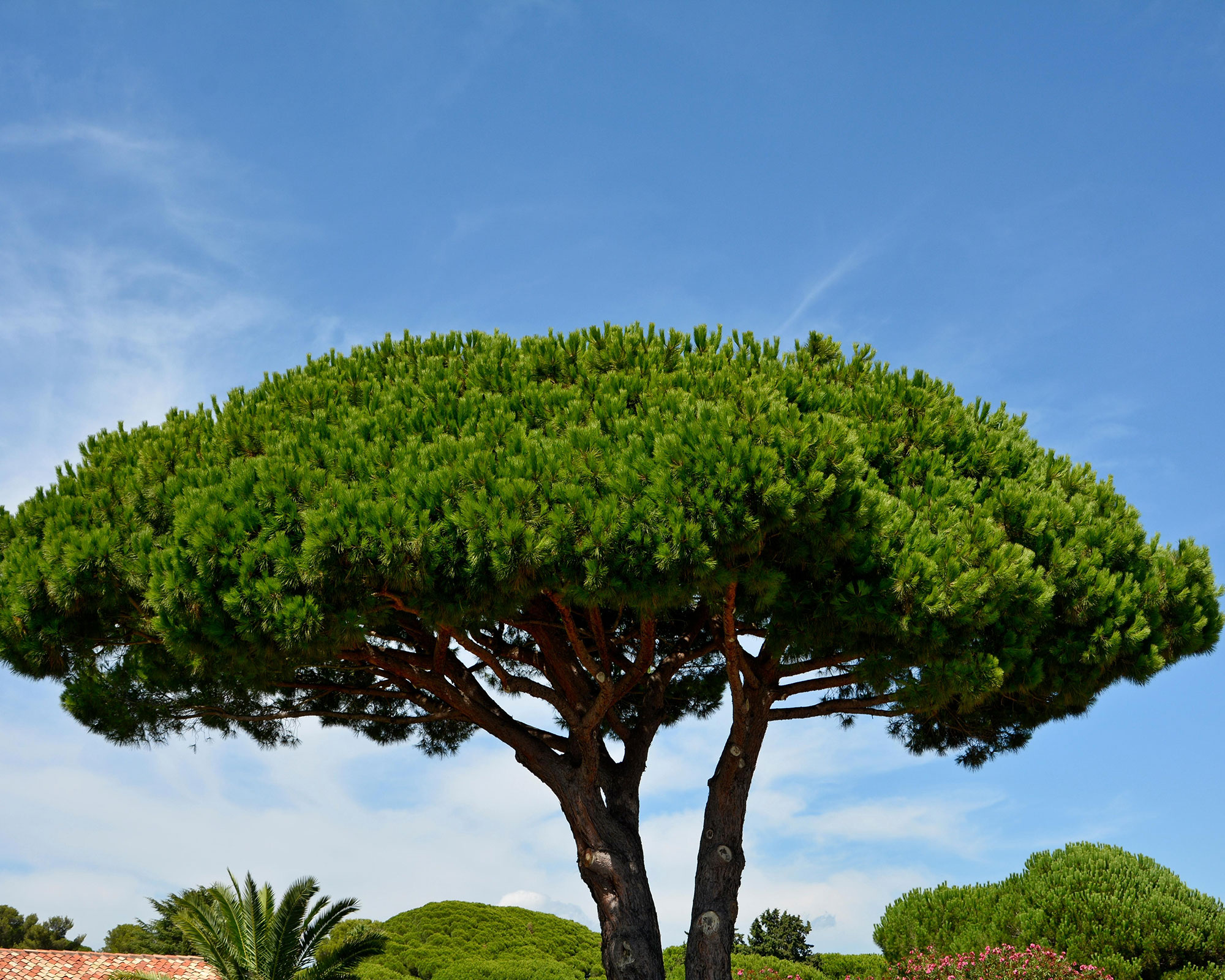
- Best for: a feature tree
- Hardiness: USDA 7-11 (UK H8)
- Height: 70ft (20m)
- Spread: 40ft (12m)
The sculptural shape of this tree takes some beating. It has a distinctive spherical crown with a flattened top, a bit like a parasol. Also known as an umbrella pine, or stone pine, the needles on the mature ones are greyish green, and the trunk has grooved bark in red brown.
It tolerates dry conditions, and prefers a sunny site, but generally these trees are not too fussy. The shape can be maintained with some light pruning in the winter, with no expensive tree surgery needed.
One for a medium to large garden, it grows about 3ft (1m) per year. The seeds, known as pine nuts, are edible and have been treated as a delicacy for centuries.
16. Pinus Contorta ‘Chief Joseph’
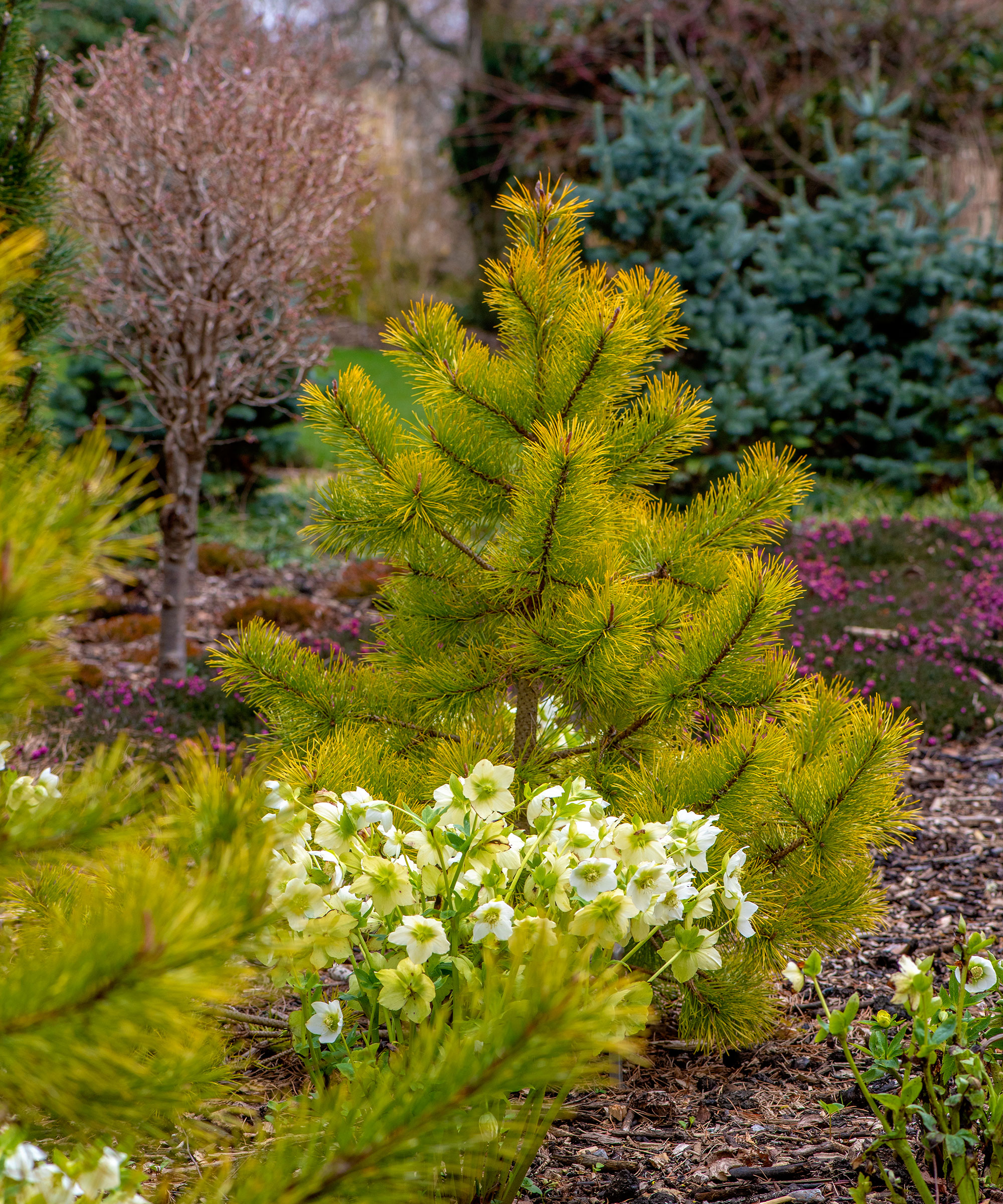
- Best for: warm winter color
- Hardiness: USDA 6-8 (UK H4)
- Height: 20ft (6m)
- Spread: 4-6ft (1.2-1.8m)
Proof, if it was needed, that evergreen trees aren't just a boring one tone green. This dwarf evergreen conifer’s needles turn a glowing gold in the fall and winter months when temperatures drop.
It’s petite and upright enough to grow in a small courtyard garden, but it will also make a splash in a larger space because of the rich color.
It needs full sun and acid or neutral well-drained soil, but it’s so straightforward to care for, it does not even need pruning.
17. Chusan Palm (Trachycarpus fortunei)
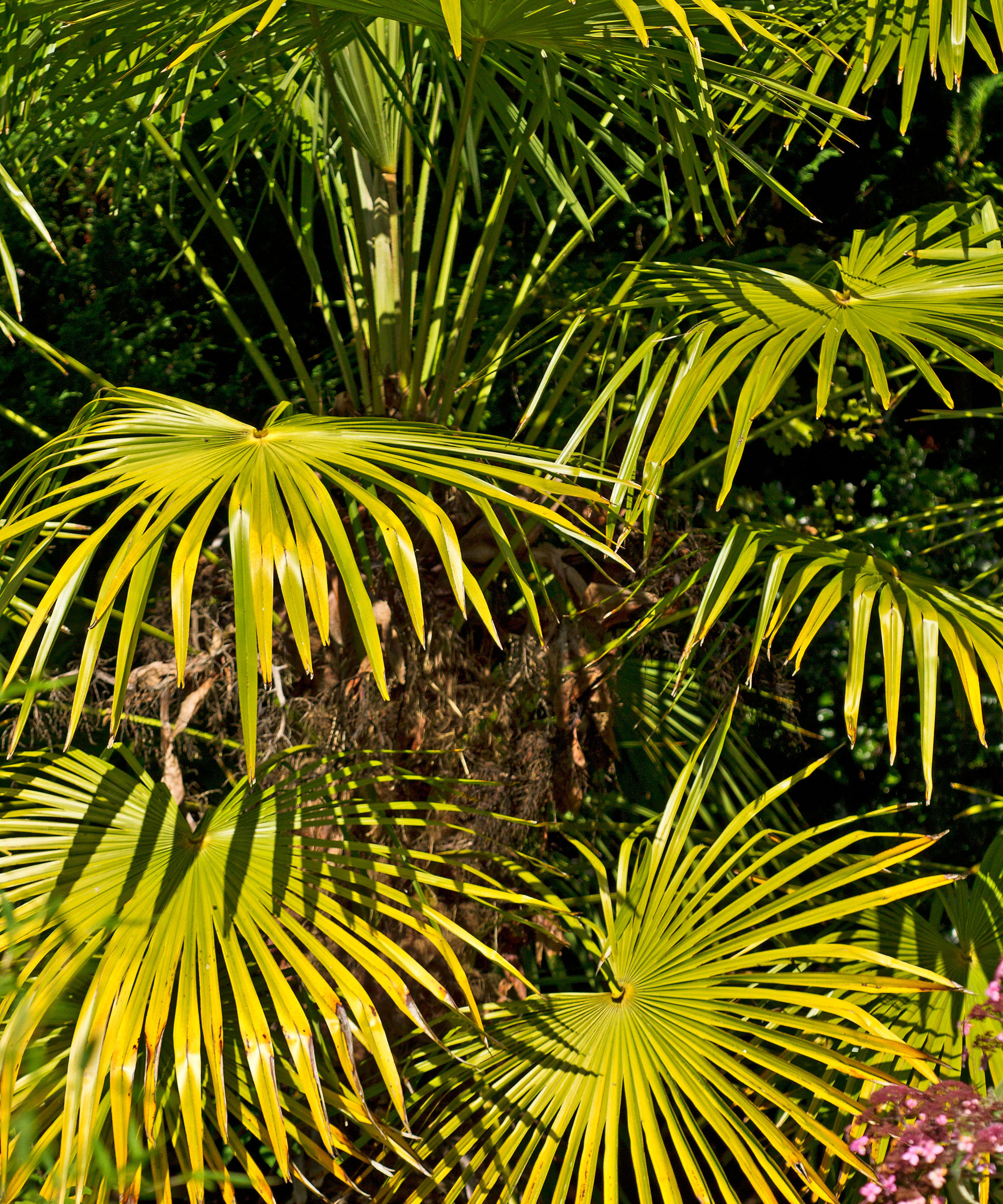
- Best for: exotic appeal
- Hardiness: USDA 8-11 (UK H8)
- Height: 6ft (2m)
- Spread: 8ft (2.5m)
No list of the best evergreen trees is complete without at least one palm. This tropical plant is prized for its large, glossy green fan-shaped leaves which sprout from a tufty, fibrous trunk on long, flexible stems. It has sprays of creamy yellow flowers in early summer.
Sheltered conditions are needed, well away from cold winds and hard frosts. This palm can be grown as part of your container gardening ideas, which makes it a flexible choice for a small backyard or even a balcony garden. It prefers full sun or lightly dappled shade.
Which trees stay green all year?
The term ‘evergreen’ is used for trees which retain their foliage and stay green all year round. Deciduous trees are the ones which shed their leaves in fall and winter.
Conifers are often described as evergreen, but some varieties are deciduous, so check carefully before purchasing to ensure that your tree will remain green in the colder seasons.
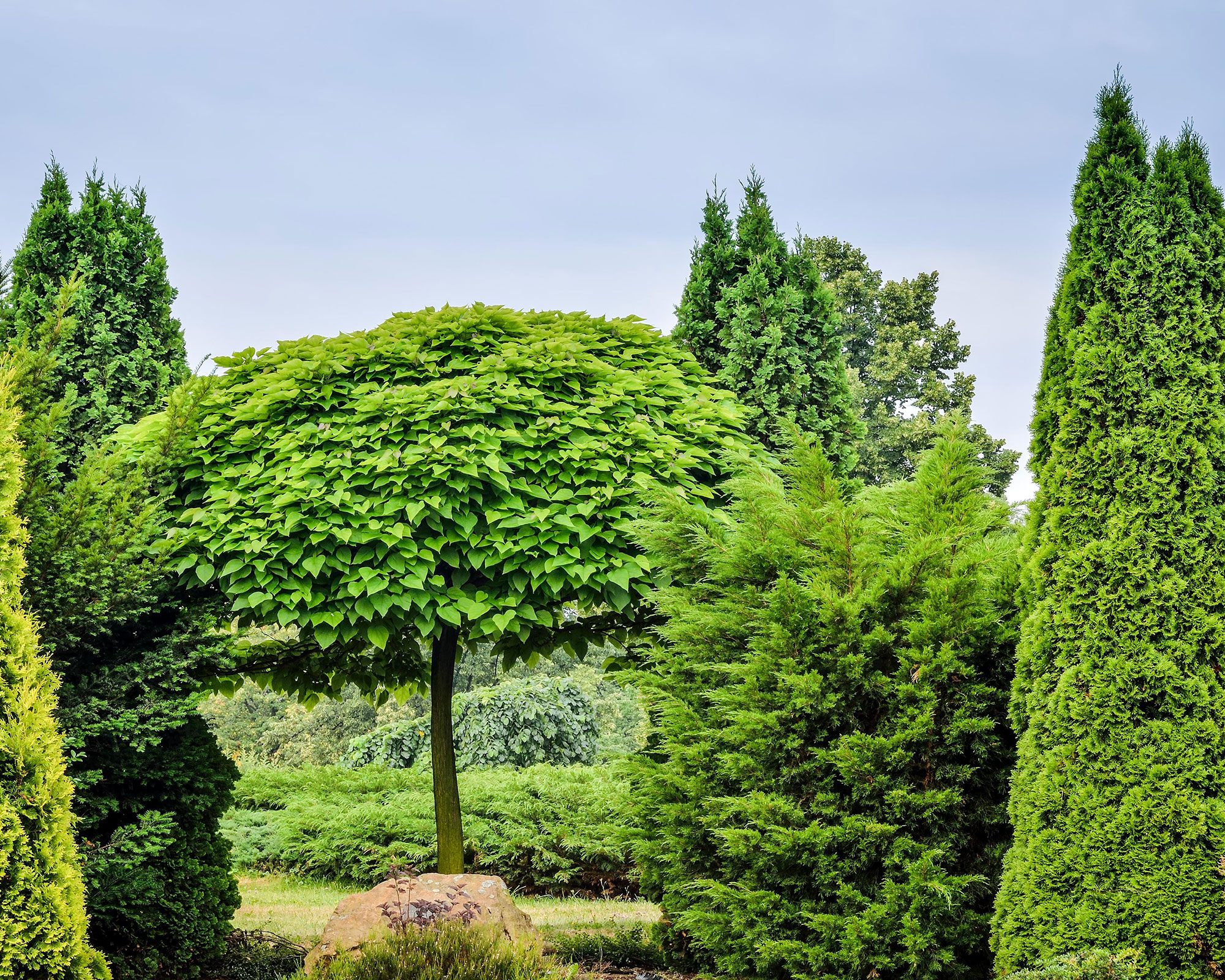
What evergreen trees are best for small gardens?
For small gardens, opt for a hard-working evergreen tree which has more to offer than just year-round green foliage. This could be flowers, attractive fruits, cones or perhaps a striking textured trunk. Try Osmanthus x burkwoodii, which is recommended by top tree expert Michael Buck of Form Plants. It has clusters of white fragrant flowers which add a heady scent to summer evenings and it will tolerate a shady growing site.
For really small backyards, consider a dwarf conifer in a container. It will add shape and texture in every season of the year. According to leading authority Adrian Bloom, author of Gardening with Conifers (available at Amazon), 'Thuja orientalis cultivars generally make great container plants – they withstand drought well and are hardy outside Britain in winter, but they would not survive cold northerly American winters.'
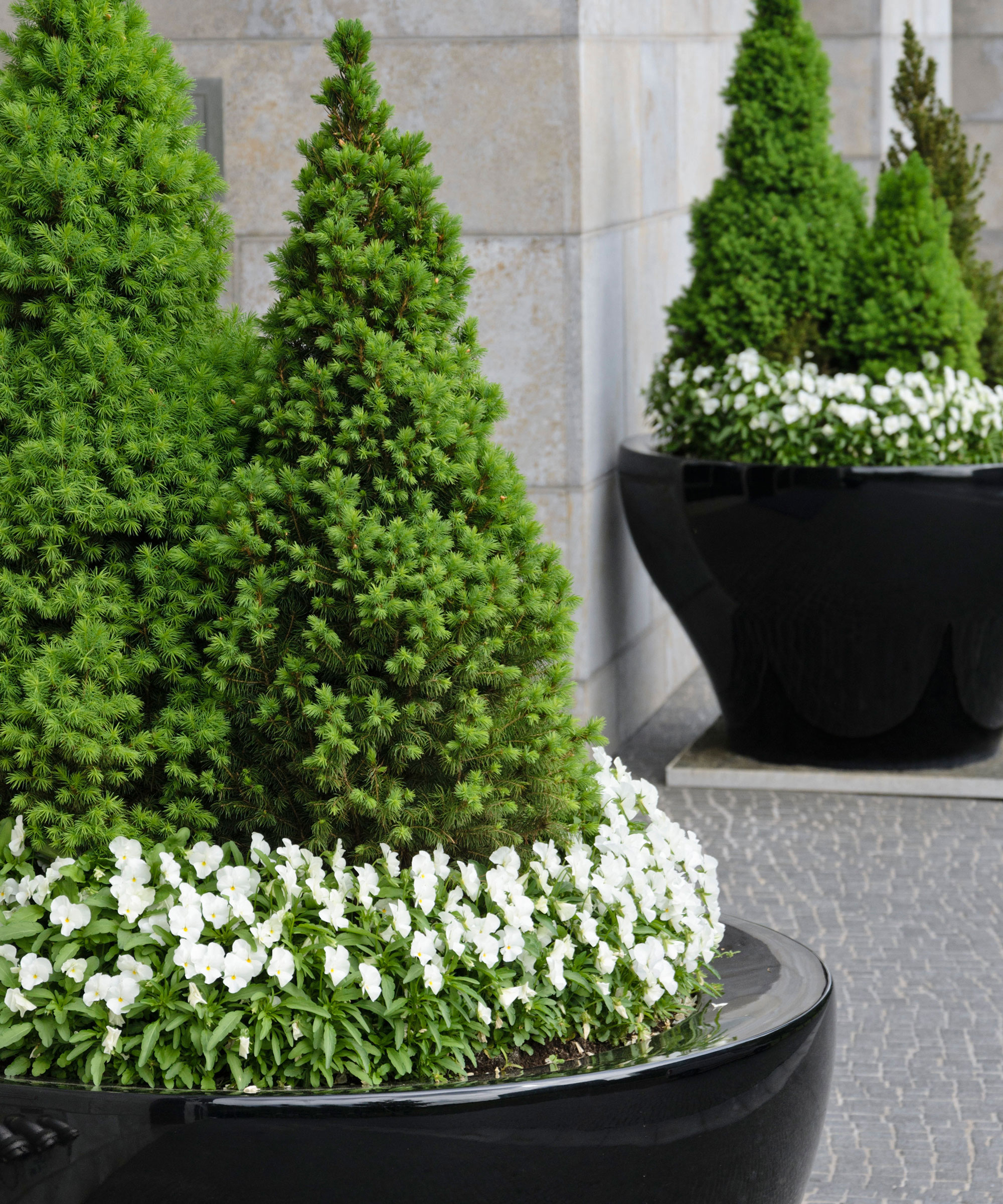
Dwarf Alberta spruce
Is it easy to maintain an evergreen tree?
It is easy to maintain the best evergreen trees, provided you choose the right tree for the right place. This can be done by checking the ultimate height and spread of the plant before you buy.
Some evergreens, notably conifers, can quickly outgrow their allotted space, casting too much shade or impinging on neighboring yards. Other factors to consider are the root spread, and the pruning requirements of different tree varieties. According to the RHS, 'to help new trees settle in, give them plenty of water and fertilizer for the first few years, as well as a sturdy stake for support.'

An experienced freelance journalist, editor and columnist writing for national magazines and websites, Fiona now specialises in gardens. She enjoys finding and writing about all kinds, from the tiniest town plots to impressively designed ones in grand country houses.
